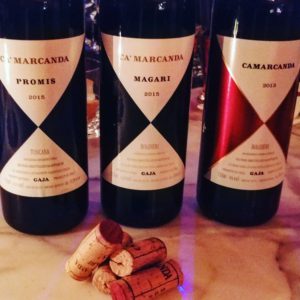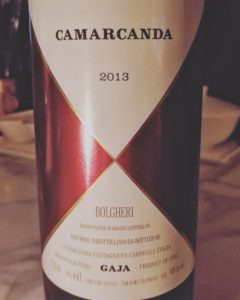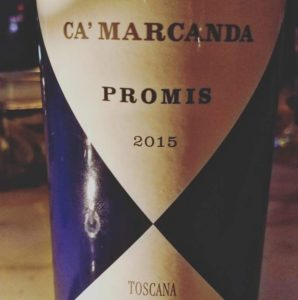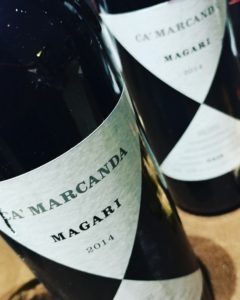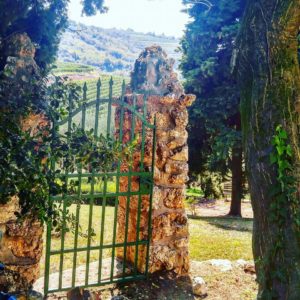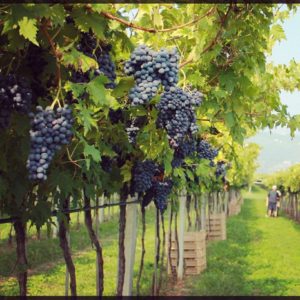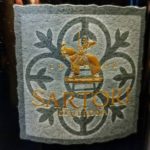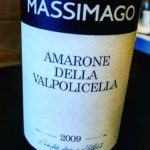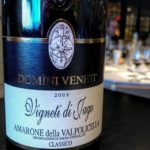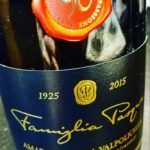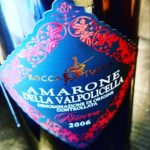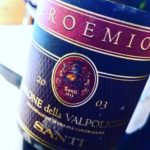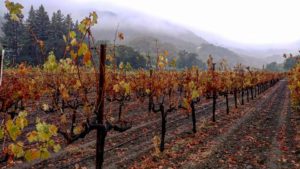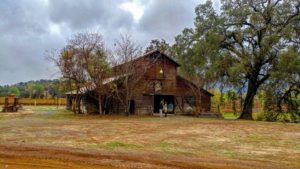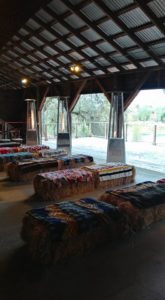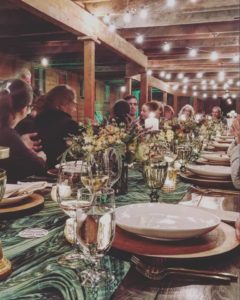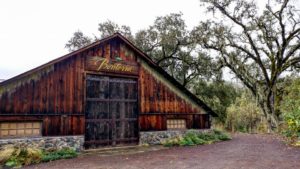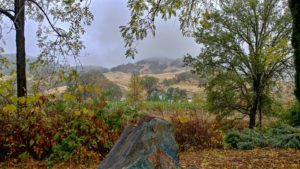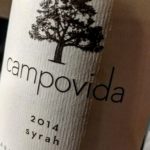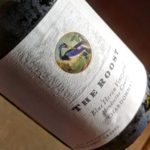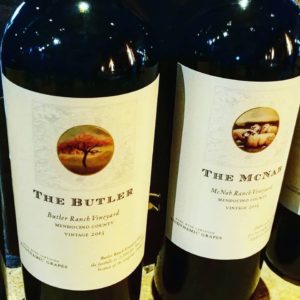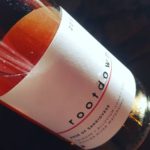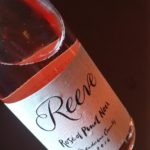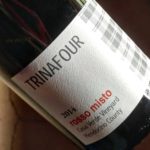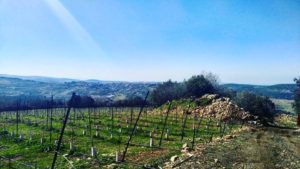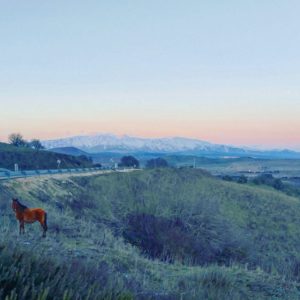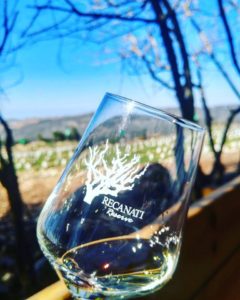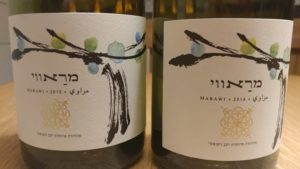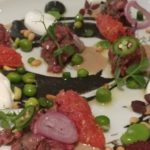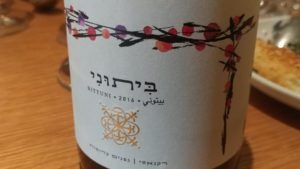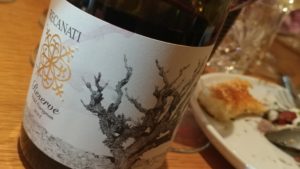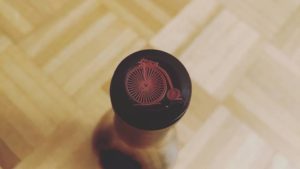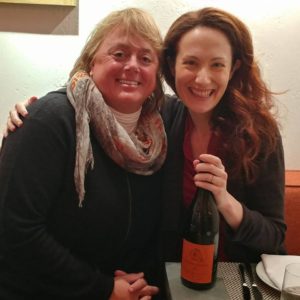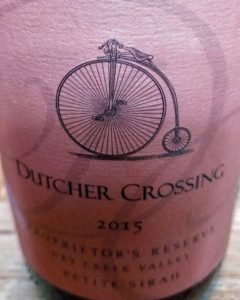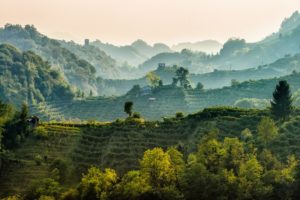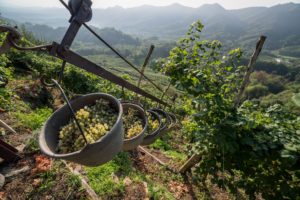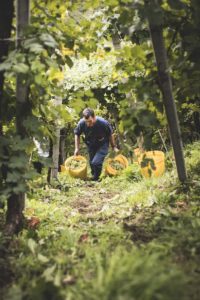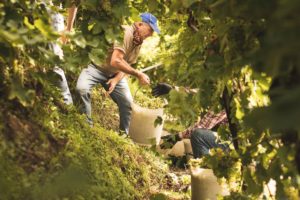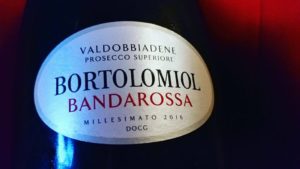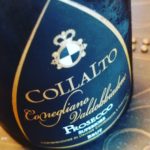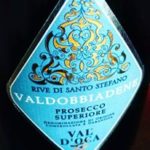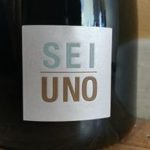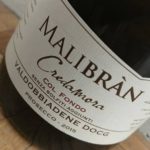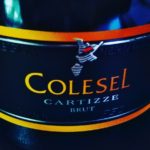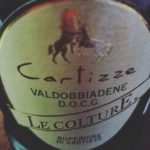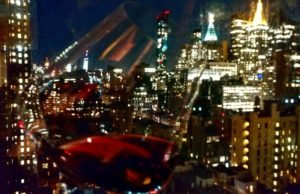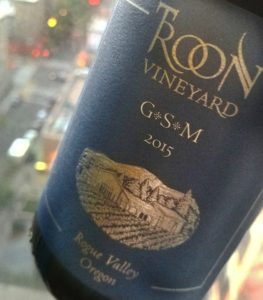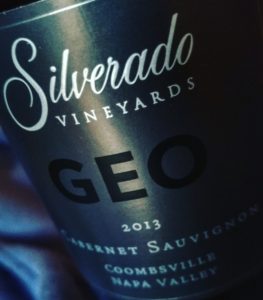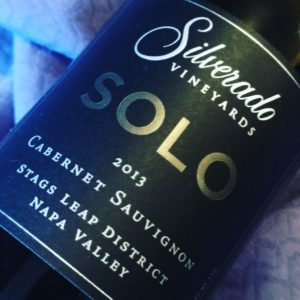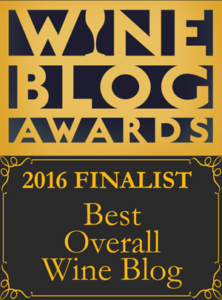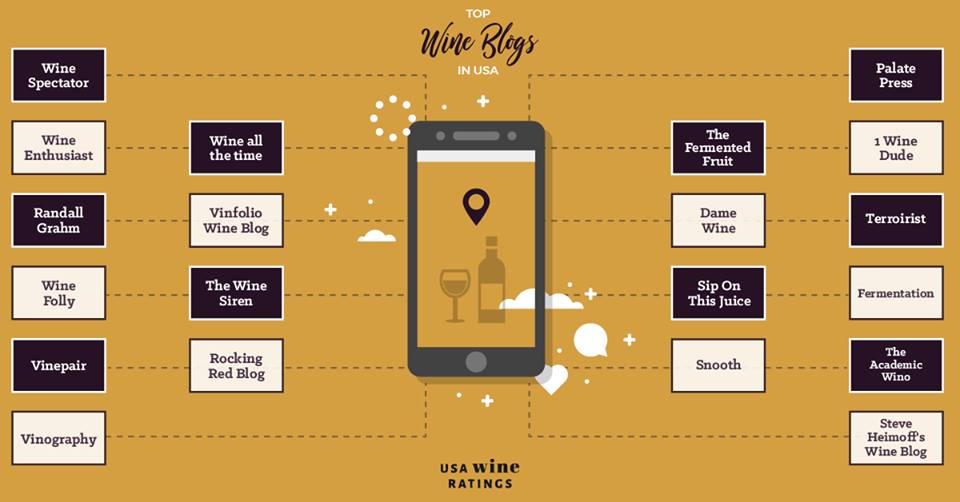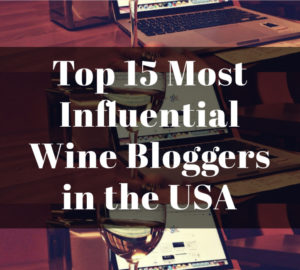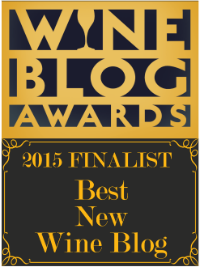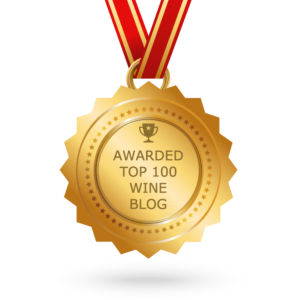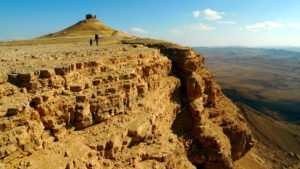 At the end of January last year, I went to the 2017 Sommelier Exhibition in Tel Aviv, Israel, on a wine press trip. I spent a couple of days tasting a wide range of wines made from various vineyards across the country which differed in altitude, humidity, temperatures, soil, etc. It ended up being a fascinating, and at times, thrilling wine tasting experience as there are so many small passionate winemakers creating wines that we never get to see in New York City, let alone the rest of the world. But there is one person who stood out… who kept coming to my mind… someone I would later find out had a much more inspirational story than I could have ever hoped or dreamt up.
At the end of January last year, I went to the 2017 Sommelier Exhibition in Tel Aviv, Israel, on a wine press trip. I spent a couple of days tasting a wide range of wines made from various vineyards across the country which differed in altitude, humidity, temperatures, soil, etc. It ended up being a fascinating, and at times, thrilling wine tasting experience as there are so many small passionate winemakers creating wines that we never get to see in New York City, let alone the rest of the world. But there is one person who stood out… who kept coming to my mind… someone I would later find out had a much more inspirational story than I could have ever hoped or dreamt up.
2017 Sommelier Exhibition in Tel Aviv
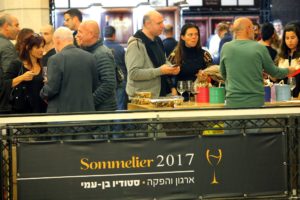
David Silverman /DPSimages
As my group and I were running around to all of our tasting appointments at this exhibition, one person stopped me in my tracks – Ya’acov Oryah. But what is funny is that, at the time, I wasn’t looking forward to tasting the wines he was representing in that moment because they were from a medium-sized commercial winery called Ella Valley Vineyards (EVV). Although they make quality wines, I was already familiar with them, and I was looking to meet people from small, unknown wineries.
Ya’acov was there with one of the EVV executives who did most of the talking, but when Ya’acov did get the chance to talk it was immediately apparent that I was not dealing with a run-of-the-mill winemaker. He had a soft, humble personality yet his warm smile and palpable desire to connect with others made him seem like a bright candle in a cynical world. When he started to talk about white wines, I could see an explosion of joy in his eyes; he then proceeded to talk about his obvious obsession with producing white wines in Israel that have lots of complexity as well as bright acidity. Even though Ya’acov himself had strong ideas about wine, he would constantly discuss his Israeli colleagues’ counter arguments which dispute his opinions. And beneath his intellect, generosity of spirit, warmth, and words filled with curiosity, I sensed a touch of sadness which only later would I realize why. Ya’acov had a profound transparency that is rare. Unfortunately our time was too short with him, and we were shuttled off to visit the next wine producer.
Reflecting on my Israeli Wine Trip
When I came back from my wine press trip to Israel, I tried to organize my notes while catching up on work and life. There were many exciting stories to tell, and unfortunately, I did not have time to tell them all. But Ya’acov Oryah kept popping up in my mind. I wanted to know his journey and hear more about his thoughts, so I connected with him on Facebook. Through time I realized that he juggled a couple of winemaking jobs with two medium sized wineries – the other being Psagot. Since that time he is no longer with Ella Valley Vineyards and only works for Psagot which seems to be working out… his presence at this winery has drawn attention from some kosher wine experts and connoisseurs as Ya’acov has a cult following… a fact that I did not know until I started to do my research on him.
Kosher Wines
Although Ya’acov Oryah was raised in an ultra-Orthodox family, and walked the walk of a religiously devout Jewish winemaker, his touch was temporarily deemed to automatically make wine un-kosher. Ya’acov had spent a great deal of time and effort delving into religious studies and so when he researched the rule that only a religious person could be the only one to touch the wine in the winery, or turn on winery equipment, he wrote an article in 2010 that questioned kosher “law” regarding this matter. Despite Ya’acov not being personally affected by this requirement for kosher wines, he saw how unfair it was to many smaller Israeli producers who could not afford to hire a religious employee if they themselves where non-religious Jews. When an Israeli winery is deemed non-kosher it makes it difficult commercially to sell enough wines to stay in business. After this article came out, he was punished by a local rabbinate that took away his ability to qualify for officially kosher labeled wines. But some religious Jewish wine connoisseurs still continued to drink his wines because they knew him and trusted him as a person.
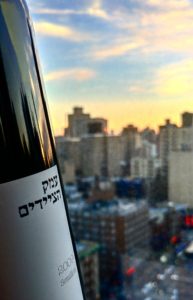 How did I come to find out the aforementioned information? I saw a post from an Israeli wine teacher and guide, David Perlmutter, who talked about tasting an amazing Hunter Valley style Sémillon that was made in Israel… the only one of its kind… and it was made in small quantities by none other than Ya’acov Oryah himself. I was shocked and I couldn’t believe it. Ya’acov made his own wines and not only that he made a Hunter Valley style… and then I found out he made orange wines too!!! I immediately started to search for articles that talked about him of which I found many… and through time I would learn that I did indeed meet a very special human being that day at the exhibition.
How did I come to find out the aforementioned information? I saw a post from an Israeli wine teacher and guide, David Perlmutter, who talked about tasting an amazing Hunter Valley style Sémillon that was made in Israel… the only one of its kind… and it was made in small quantities by none other than Ya’acov Oryah himself. I was shocked and I couldn’t believe it. Ya’acov made his own wines and not only that he made a Hunter Valley style… and then I found out he made orange wines too!!! I immediately started to search for articles that talked about him of which I found many… and through time I would learn that I did indeed meet a very special human being that day at the exhibition.
Ya’acov Oryah
The more I started to learn about Ya’acov the more it became apparent why he made such a great first impression. Again, he was raised in a very religious family yet he always had the desire to reach out to the broader and more diverse world. When he was young he worked in construction while getting a degree in engineering and he was always committed to his religious studies that mainly focused on Kabbalah – an esoteric school of thought that originated in Judaism. But he was always drawn to wine – in 2004, he went from a thoughtful wine enthusiast to taking his first winery course… and now, currently makes wines that have a strong cult following within the Israeli wine connoisseur community.
Ya’acov has had more than his share of challenges… from experiencing financial problems when he had issues selling wine, as well as getting hired by a commercial winery to pay his bills after his touch would make a wine un-kosher, to his previous wife being greatly ill, and finally passing away, when he was supposed to launch his personal wines in November 2015.
No matter how many knocks Ya’acov has been given in life, it seems he finds a way to the light with his never ending curiosity and passion to connect to the world. He believes in a “culture of pluralism” – an economic boycott of wines coming from controversial areas in the West Bank does no one any good as it only harms small business owners and it does not add to progress. A better way is for people from different religions, or lack of religions, and cultures to reach out to each other. At one time, he applied for a winemaker job at the Palestinian Taybeh Winery, and although he never got it, he was open to a new experience. One of the main reasons he was drawn to wine is that it can be a vehicle to bring people together.
 Obviously, Ya’acov is not afraid to question everything in life, and this extends to his winemaking beliefs; before he even knew about others making orange wines, he wanted to use the skins in white wine making – he thought it didn’t make sense to throw away something that could give the wine so much more complexity. Then he happily found out that he was not alone in this mindset and that other areas, and winemakers, had been making orange wines as well.
Obviously, Ya’acov is not afraid to question everything in life, and this extends to his winemaking beliefs; before he even knew about others making orange wines, he wanted to use the skins in white wine making – he thought it didn’t make sense to throw away something that could give the wine so much more complexity. Then he happily found out that he was not alone in this mindset and that other areas, and winemakers, had been making orange wines as well.
Proof is in the Pudding
When I had read all this research about Ya’acov, I decided to reach out to him on Facebook and asked for him to email me if he ever came to New York City with his own personal wines. My wine writer’s heart ached that I missed such a remarkable winemaker while in Israel and I did not want to miss another opportunity. Just like how Ya’acov came to the conclusion that he needed to work for a more commercially viable winery to support himself and his family so he could continue to be true to his own wines, a wine writer has to find other ways to support himself/herself to finance their uncensored “true” writing that represents what authentically inspires him/her in the wine world. So meeting someone like him makes it all worthwhile.
Ya’acov did write back to me to say that he didn’t think he would be able to get his personal wines to New York City anytime in the near future because of the tiny quantities he makes. But then he shipped some samples to me over a couple months ago during ideal conditions! I could not wait to try them and I made sure to give them a couple months to settle. My husband warned me that I needed to be careful of my high expectations for the wines because of the chance the wines could not live up to such a lofty ideal. Well, Ya’acov’s wines were even more than I could have imagined, and hands down topped the list of the most exciting ones I have had in a long time.
Enriching, Peaceful Life
It is easy to get down and feel like things are getting worse in the world instead of better. We look around for examples of kindness, generosity, real beauty and things that will bring us together… and many times we are so inundated by negativity, divisive superficial labels, fear mongering, and just petty disagreements that we miss those people quietly living in the world, making profound, positive changes. Albeit small and at times unnoticeable, these changes do add up and it is the only way that people will come together. To be able to be true to ourselves and know others living in another way is not a threat to our way of life, as well as ours not being a threat to theirs, is the only way we can balance peace with enrichment from others. I am most grateful to know that Ya’acov exists and I really think he is the example of hope that all of us need right here, right now.
***Photo Credit of top picture: Avi-Yotham
*************************************************
I tasted Ya’acov Oryah’s wines from December 20th , 2017 until January 1st, 2018 and I noted which dates I tasted different wines before the different category of tasting notes.
Also, Ya’acov makes his wines in very small quantities so right now they are only available in Israeli restaurants in the cities of Jerusalem and Tel Aviv. Currently, Ya’acov doesn’t know if he will ever make quantities in the amount where they can be exported. But if you are planning a trip to Israel and if you would like to know which restaurants are pouring them I would be happy to reach out to Ya’acov and get back to you. My email is damewine @ damewine . com
I just thought his story was so inspirational that it had to be shared.
Location of vineyards sourced below:
Some of the grapes for the below wines came from vineyards in the Negev wine region in Israel and points to Ya’acov’s belief in desert wines. Actually some of the vineyards are in Mitzpe Ramon aka Makhtesh Ramon, a place with a very unique microclimate due to the Ramon Crater – the world’s largest erosion crater, or makhtesh, unique to Israel’s Negev and Egypt’s Sinai desert. So, the extreme diurnal temperature swings, from hot to cold, which is found in the Mitzpe Ramon is moderated by strong winds all year round because of its location above the crater. Ya’acov has also sourced grapes from as far north as the Galilee, a classic wine growing area for Israel, and closer proximity Judean Hills, the Israeli wine area known for the current wine rock stars.
Orange
Both orange wines were first tasted on December 20th, 2017 over the course of 5 hours and then re-tasted two days later on December 22nd, 2017
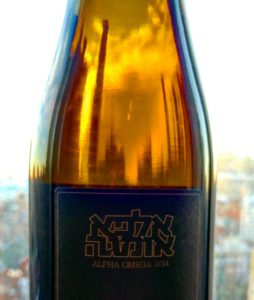 -2014 Alpha Omega: A blend of white grape varieties, Roussanne, Viognier and Sémillon that were left in contact with their skins for 72 days or so. The name refers to the whole grape being used. It had a more golden color than orange or amber. My attitude is that orange wines should be treated like great red wines – decanted for at least 30 minutes before opening and ideally left open for the rest of the day/evening (I tasted over 5 hours) and left it in the fridge to check back with it two days later. The wine evolved into delightfully different qualities throughout this time.
-2014 Alpha Omega: A blend of white grape varieties, Roussanne, Viognier and Sémillon that were left in contact with their skins for 72 days or so. The name refers to the whole grape being used. It had a more golden color than orange or amber. My attitude is that orange wines should be treated like great red wines – decanted for at least 30 minutes before opening and ideally left open for the rest of the day/evening (I tasted over 5 hours) and left it in the fridge to check back with it two days later. The wine evolved into delightfully different qualities throughout this time.
After the first 30 minutes, notes of honeysuckle and candied orange rind appear with an intense chalky minerality that has a tart, fierce finish with lots of structure – which is a quality I love in a lot of orange wines that makes them so good with food. After 1 hour, the wine became more floral and after 3 hours, notes of blanched almonds and lapsang black tea revealed themselves while the palate started to round out and have more of a gentle tangy quality on the finish. Then after 5 hours it surprisingly became more brightly tropical with mango and pineapple and the body seemed to have more weight and viscosity… then after two days of having it in the fridge under a vacuum sealer, it gave quince paste and candied ginger flavors and wet stones aromas with a full body that was layered with textural complexity that felt like strands of fine silk.
 -2015 Jemma Brut: 100% Sémillon. This wine is named after Brut Wine Bar co-founder Jemma Naveh and available only at their restaurant. First of all, the color is a stunning copper color! Not as structural as the Alpha Omega, more plush on the body with a broader shape. It gives flavors right off the bat with dried kumquats and smoky minerality. After 1 hour it displayed enticing sherry and nutmeg notes; this wine in its 3rd hour exhibited opulent crème brûlée, smoldering mesquite wood, forest floor and wild morels, and finally the 5th hour went back to sweeter notes of candied covered almonds. After a couple of days under a vacuum sealer in the fridge it showed a heavenly toffee note with a seemingly richer body although the marked acidity still gave it an incredible lift on the end. The pairing possibilities with this wine are endless as you can imagine.
-2015 Jemma Brut: 100% Sémillon. This wine is named after Brut Wine Bar co-founder Jemma Naveh and available only at their restaurant. First of all, the color is a stunning copper color! Not as structural as the Alpha Omega, more plush on the body with a broader shape. It gives flavors right off the bat with dried kumquats and smoky minerality. After 1 hour it displayed enticing sherry and nutmeg notes; this wine in its 3rd hour exhibited opulent crème brûlée, smoldering mesquite wood, forest floor and wild morels, and finally the 5th hour went back to sweeter notes of candied covered almonds. After a couple of days under a vacuum sealer in the fridge it showed a heavenly toffee note with a seemingly richer body although the marked acidity still gave it an incredible lift on the end. The pairing possibilities with this wine are endless as you can imagine.
White
The Valley of the Hunters was first tasted on December 21st, 2017 for over 4 hours and re-tasted again 9 days after, placed in the fridge under vacuum sealer, on December 30th, 2017
 -2009 Valley of the Hunters (Emek Ha’Tzayadim): 100% Sémillon. Unoaked. Grapes picked early giving a final alcohol of 11% abv. Initially, this wine was released earlier than intended in tiny quantities when Ya’acov had partners under another winery name, but he left due to creative differences and bought back the remaining stock of this wine to cellar it and release it when he thought it was ready.
-2009 Valley of the Hunters (Emek Ha’Tzayadim): 100% Sémillon. Unoaked. Grapes picked early giving a final alcohol of 11% abv. Initially, this wine was released earlier than intended in tiny quantities when Ya’acov had partners under another winery name, but he left due to creative differences and bought back the remaining stock of this wine to cellar it and release it when he thought it was ready.
LOVED THIS WINE AND IT BLEW ME AWAY after 9 days of being open under a vacuum sealer in the fridge… it was bursting with lots of flavors: peach cobbler, lychee syrup, dried sliced mango and an intense smoky note almost like it was aged in charred oak, although there is no oak in this wine, and on the finish a real limestone quality.
Since this is a Hunter Valley style Sémillon, picked very early with fierce acidity, I knew I would need to taste it over several hours… also, it will age beautifully and this is why Ya’acov feels this wine is just starting to come into its own. My first taste of this wine, after 30 minutes of being opened showed flinty minerality, lime blossom, waxy body, sharp acidity with a hint of tar on the finish; 2nd taste was 1 hour later with richer citrus, key lime pie, lemon custard; 3rd taste was 2 hours later with dried grapefruit, lanolin, golden apple, fresh hay, salty finish; 4th taste was 3 hours later with more spicy, white pepper notes; 5th taste 4 hours later with cinnamon, gun smoke, and intense slate across very long finish.
The Light from Darkness was tasted on December 30th, 2017
 -2016 Light from Darkness (Or m’Ofel): A white wine made from using Rhône red grape varieties: Grenache, Cinsault, and Mourvèdre. These grapes were harvested early for lower alcohol (11.5% abv) and red grapes where chosen for a fuller body. The grapes were pressed off their skins and so there is very little skin contact like a white wine. The lemon color had a slight pinkish hue to the rim which was part of its charm. A rich body yet that exhibited thrilling acidity with fresh red raspberries, white cherries and wild flowers.
-2016 Light from Darkness (Or m’Ofel): A white wine made from using Rhône red grape varieties: Grenache, Cinsault, and Mourvèdre. These grapes were harvested early for lower alcohol (11.5% abv) and red grapes where chosen for a fuller body. The grapes were pressed off their skins and so there is very little skin contact like a white wine. The lemon color had a slight pinkish hue to the rim which was part of its charm. A rich body yet that exhibited thrilling acidity with fresh red raspberries, white cherries and wild flowers.
A general impression of Ya’aov’s wines is that they all seem to have such generosity in weight or texture, as well as complexity of flavors, but they are just so alive with acidity… everything is lifted and so you have a decadent experience but instead of it being heavy, it is refreshing with new subtle complexities always revealing themselves on the next sip. His wines are certainly unique… they have a lot of great Old World charm but that title seems to not do his wines justice as they are unique.
Red
All of the below Reds were tasted over the course of two hours on December 31st, 2017
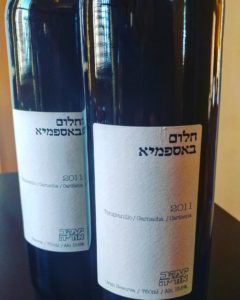 -2011 Iberian Dream Reserva (Chalom B’Aspamia Reserva): A blend of Tempranillo, Grenache and Carignan with 1 year in oak barrels. This Reserva and the Gran Reserva (note below) is Ya’acov’s homage to Rioja and a study in barrel aging. I like the slight grip from the fine tannins as it gives this wine a lovely shape on the palate. The layers of dark fruit beckon you into the glass revealing riveting notes of Herbes de Provence, incense, iron with nice weight on the body that makes this wine an intriguing pleasure. Despite having cult status in Israel for his orange and white wines, his reds do not disappoint – they have that same elegant complexity with electric zing.
-2011 Iberian Dream Reserva (Chalom B’Aspamia Reserva): A blend of Tempranillo, Grenache and Carignan with 1 year in oak barrels. This Reserva and the Gran Reserva (note below) is Ya’acov’s homage to Rioja and a study in barrel aging. I like the slight grip from the fine tannins as it gives this wine a lovely shape on the palate. The layers of dark fruit beckon you into the glass revealing riveting notes of Herbes de Provence, incense, iron with nice weight on the body that makes this wine an intriguing pleasure. Despite having cult status in Israel for his orange and white wines, his reds do not disappoint – they have that same elegant complexity with electric zing.
-2011 Iberian Dream Gran Reserva (Chalom B’Aspamia Gran Reserva): This Gran Reserva is the same wine as above but it has been aging in oak barrels for 3 years. This wine has an addictive truffle and exotic spice nose with well-integrated tannins that have become more velvety… the palate is both round and crisp with hints of cigar box and fresh leather on the finish making your heart ache for more.
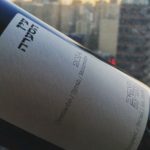 -2014 Eye of the Storm (Ein Ha’Se’ara): This wine is a GSM (Grenache, Syrah and Mourvèdre) single vineyard field blend. A beguiling bouquet of violets, charcoal BBQ with layers of black and blue fruits that has gravelly rocks along the long length… it is rounder and warmer than the Iberian Dream and has much more of a Mediterranean soul to it yet, there is still an underlying linearity and brightness that gives an energetic edge to this wine.
-2014 Eye of the Storm (Ein Ha’Se’ara): This wine is a GSM (Grenache, Syrah and Mourvèdre) single vineyard field blend. A beguiling bouquet of violets, charcoal BBQ with layers of black and blue fruits that has gravelly rocks along the long length… it is rounder and warmer than the Iberian Dream and has much more of a Mediterranean soul to it yet, there is still an underlying linearity and brightness that gives an energetic edge to this wine.
 -2014 Pandora’s Riddle (Chidat Pandora): 50% Pinot Noir with 50% of Eye of the Storm (Ein Ha’Se’ara) see above. This wine transformed with more smoky cedar with sautéed cardamom seeds, deeper purple fruits, dried thyme and a fuller body that had a mint-y note that gave more vitality to the wine as it evolved.
-2014 Pandora’s Riddle (Chidat Pandora): 50% Pinot Noir with 50% of Eye of the Storm (Ein Ha’Se’ara) see above. This wine transformed with more smoky cedar with sautéed cardamom seeds, deeper purple fruits, dried thyme and a fuller body that had a mint-y note that gave more vitality to the wine as it evolved.
Sweet
The Old Musketeer was first tasted throughout the day on December 31st, 2017 and again on January 1st, 2018
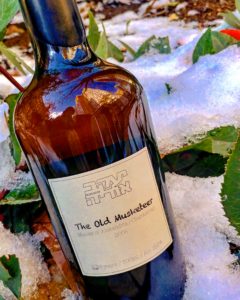 -2008 The Old Musketeer: Fortified Muscat of Alexandria and Chardonnay at 15.9% abv and aged for 8 years in barrel. The base wine was blended with Chardonnay to add balance as well as acidity. This is Ya’acov’s study in oxidation – after 8 years in barrels, he only bottled two barrels, and he left the rest to continue in their oxidative environment. The nose is amazing with salt water taffy, burnt sugar, caramel, apricot preserves and dried rose petals. The body is viscous and lush yet it has that wall of acidity that gives this sweet wine so much vitality… initially tasted at refrigerator temperatures and as it warmed up it displayed aromas of golden raisins and toasted coconut. The next day of tasting it, there was this enticing grilled fig note that came out and it was smokier in character. The complexity of flavors in combination with the overall zeal and enthusiasm created by the acid makes it one of my favorite sweet wines… and it is from Israel. Who would have ever guessed?!
-2008 The Old Musketeer: Fortified Muscat of Alexandria and Chardonnay at 15.9% abv and aged for 8 years in barrel. The base wine was blended with Chardonnay to add balance as well as acidity. This is Ya’acov’s study in oxidation – after 8 years in barrels, he only bottled two barrels, and he left the rest to continue in their oxidative environment. The nose is amazing with salt water taffy, burnt sugar, caramel, apricot preserves and dried rose petals. The body is viscous and lush yet it has that wall of acidity that gives this sweet wine so much vitality… initially tasted at refrigerator temperatures and as it warmed up it displayed aromas of golden raisins and toasted coconut. The next day of tasting it, there was this enticing grilled fig note that came out and it was smokier in character. The complexity of flavors in combination with the overall zeal and enthusiasm created by the acid makes it one of my favorite sweet wines… and it is from Israel. Who would have ever guessed?!
The idea that he is able to keep the acidity well integrated throughout all of these wines is extremely impressive.
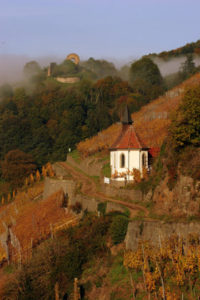 As the world slowly recovers from having been turned upside down by a plummeted economy, there have been some nasty side effects but some exciting developments as well, such as the world demanding more diversity and authentic quality. At one time, a person’s future was predetermined by their childhood circumstances – if you didn’t fit into a particular box, then certain industries wouldn’t take you seriously. The same could be said for wine. But the times, they are a changin’!
As the world slowly recovers from having been turned upside down by a plummeted economy, there have been some nasty side effects but some exciting developments as well, such as the world demanding more diversity and authentic quality. At one time, a person’s future was predetermined by their childhood circumstances – if you didn’t fit into a particular box, then certain industries wouldn’t take you seriously. The same could be said for wine. But the times, they are a changin’! Many know the “Pinot Grigio” style, although Italian Pinot Grigio covers the gamut with regards to quality, and wine drinkers tend to associate it with a style that is light and refreshing. The “Alsatian” Pinot Gris is completely different, with a richer body and more smoky/earthy flavors. I was reminded of it while attending the Wines of Alsace seminar at the Wine Bloggers Conference. Alsace has had a long, complicated history going back and forth as either a region of France or one of Germany, and so it did not fit neatly in a box when it came to promoting it. Also, there has been some confusion with regards to naming this grape in Alsace; before 1970 it was called Grauer Tokayer, then Tokay Gris, then Tokay d’Alsace, then Tokay Pinot Gris, and finally, on April 1st, 2007, it was officially recognized as Pinot Gris! No wonder this long established, noble grape variety of Alsace has had its issues getting its name out.
Many know the “Pinot Grigio” style, although Italian Pinot Grigio covers the gamut with regards to quality, and wine drinkers tend to associate it with a style that is light and refreshing. The “Alsatian” Pinot Gris is completely different, with a richer body and more smoky/earthy flavors. I was reminded of it while attending the Wines of Alsace seminar at the Wine Bloggers Conference. Alsace has had a long, complicated history going back and forth as either a region of France or one of Germany, and so it did not fit neatly in a box when it came to promoting it. Also, there has been some confusion with regards to naming this grape in Alsace; before 1970 it was called Grauer Tokayer, then Tokay Gris, then Tokay d’Alsace, then Tokay Pinot Gris, and finally, on April 1st, 2007, it was officially recognized as Pinot Gris! No wonder this long established, noble grape variety of Alsace has had its issues getting its name out.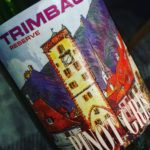 -2014 Trimbach, Pinot Gris, Reserve (SRP $26): A seemingly dry wine (5.4 g/l residual sugar balanced with 6.3 g/l acid) with flinty minerality, floral notes and peachy flavors with a sustained finish that has nice precision.
-2014 Trimbach, Pinot Gris, Reserve (SRP $26): A seemingly dry wine (5.4 g/l residual sugar balanced with 6.3 g/l acid) with flinty minerality, floral notes and peachy flavors with a sustained finish that has nice precision.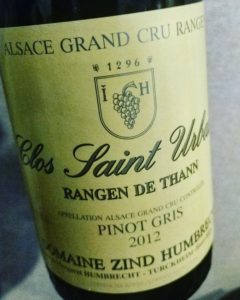 -2012 Zind-Humbrecht, Pinot Gris, Grand Cru Rangen de Thann, Clos St. Urbain (SRP $90): Organic and Biodynamic producer. Enticingly spicy with brown sugar and grilled pineapple notes and a rich body, with only moderately sweet flavor at 38 g/l residual sugar and an intoxicatingly smoky note that danced in my head. A Knockout!
-2012 Zind-Humbrecht, Pinot Gris, Grand Cru Rangen de Thann, Clos St. Urbain (SRP $90): Organic and Biodynamic producer. Enticingly spicy with brown sugar and grilled pineapple notes and a rich body, with only moderately sweet flavor at 38 g/l residual sugar and an intoxicatingly smoky note that danced in my head. A Knockout!













